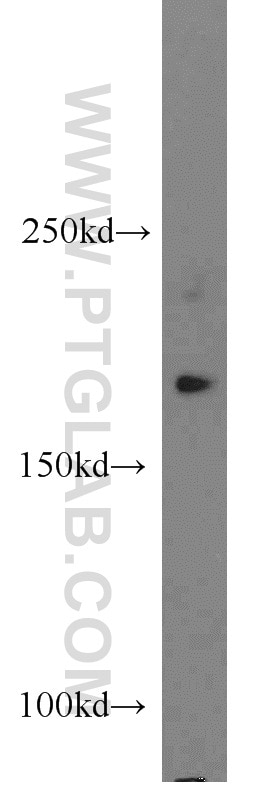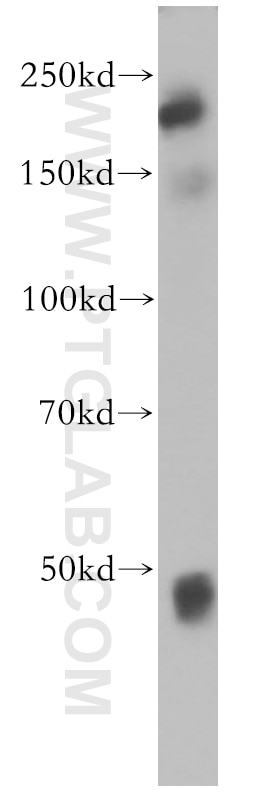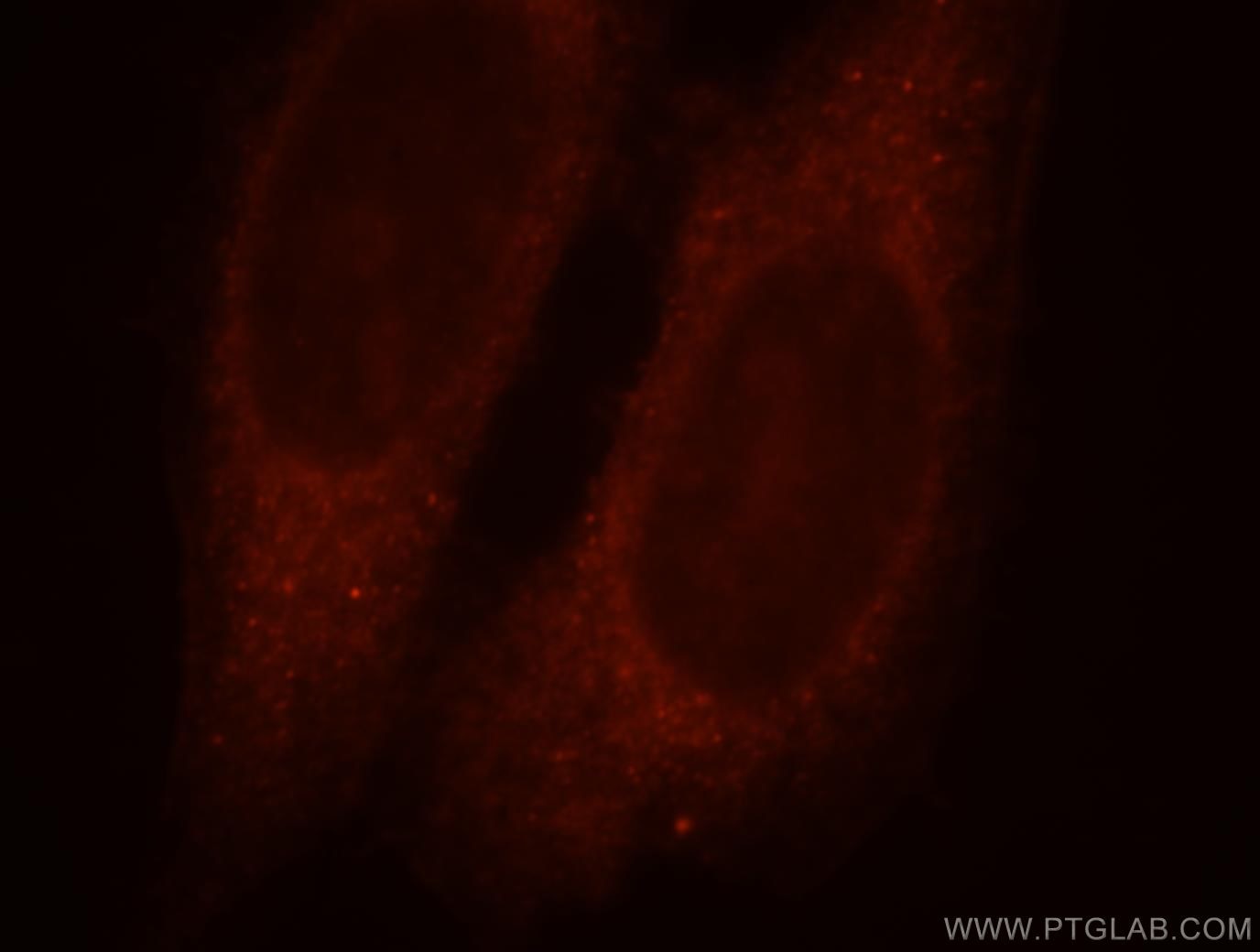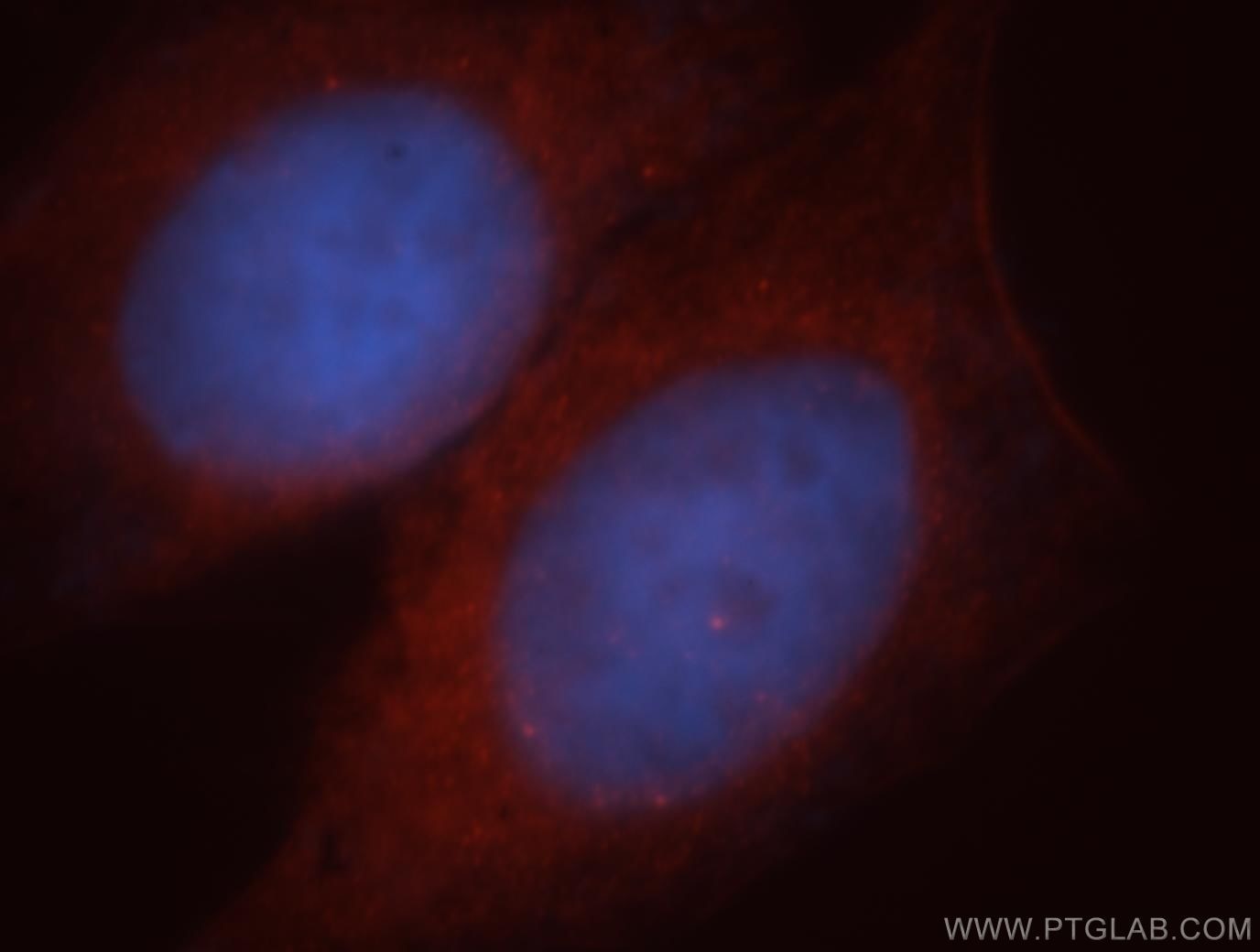PPP1R9A Polyklonaler Antikörper
PPP1R9A Polyklonal Antikörper für WB, IF/ICC, ELISA
Wirt / Isotyp
Kaninchen / IgG
Getestete Reaktivität
human, Maus, Ratte
Anwendung
WB, IF/ICC, ELISA
Konjugation
Unkonjugiert
Kat-Nr. : 18801-1-AP
Synonyme
Geprüfte Anwendungen
| Erfolgreiche Detektion in WB | PC-3-Zellen |
| Erfolgreiche Detektion in IF/ICC | HepG2-Zellen, HeLa-Zellen |
Empfohlene Verdünnung
| Anwendung | Verdünnung |
|---|---|
| Western Blot (WB) | WB : 1:500-1:1000 |
| Immunfluoreszenz (IF)/ICC | IF/ICC : 1:10-1:100 |
| It is recommended that this reagent should be titrated in each testing system to obtain optimal results. | |
| Sample-dependent, check data in validation data gallery | |
Produktinformation
18801-1-AP bindet in WB, IF/ICC, ELISA PPP1R9A und zeigt Reaktivität mit human, Maus, Ratten
| Getestete Reaktivität | human, Maus, Ratte |
| Wirt / Isotyp | Kaninchen / IgG |
| Klonalität | Polyklonal |
| Typ | Antikörper |
| Immunogen | Peptid |
| Vollständiger Name | protein phosphatase 1, regulatory (inhibitor) subunit 9A |
| Berechnetes Molekulargewicht | 123 kDa |
| Beobachtetes Molekulargewicht | 180 kDa |
| GenBank-Zugangsnummer | BC150636 |
| Gene symbol | PPP1R9A |
| Gene ID (NCBI) | 55607 |
| Konjugation | Unkonjugiert |
| Form | Liquid |
| Reinigungsmethode | Antigen-Affinitätsreinigung |
| Lagerungspuffer | PBS with 0.02% sodium azide and 50% glycerol |
| Lagerungsbedingungen | Bei -20°C lagern. Nach dem Versand ein Jahr lang stabil Aliquotieren ist bei -20oC Lagerung nicht notwendig. 20ul Größen enthalten 0,1% BSA. |
Hintergrundinformationen
PPP1R9A, also named as KIAA1222 and NEB1, binds to actin filaments (F-actin) and shows cross-linking activity. PPP1R9A has been found to be concentrated in the synapse of developed neurons and in the lamellipodia of the growth cone during neuron development.PPP1R9A may be involved in neurite formation. PPP1R9A inhibits protein phosphatase 1-alpha activity.
Protokolle
| PRODUKTSPEZIFISCHE PROTOKOLLE | |
|---|---|
| WB protocol for PPP1R9A antibody 18801-1-AP | Protokoll herunterladen |
| IF protocol for PPP1R9A antibody 18801-1-AP | Protokoll herunterladen |
| STANDARD-PROTOKOLLE | |
|---|---|
| Klicken Sie hier, um unsere Standardprotokolle anzuzeigen |





